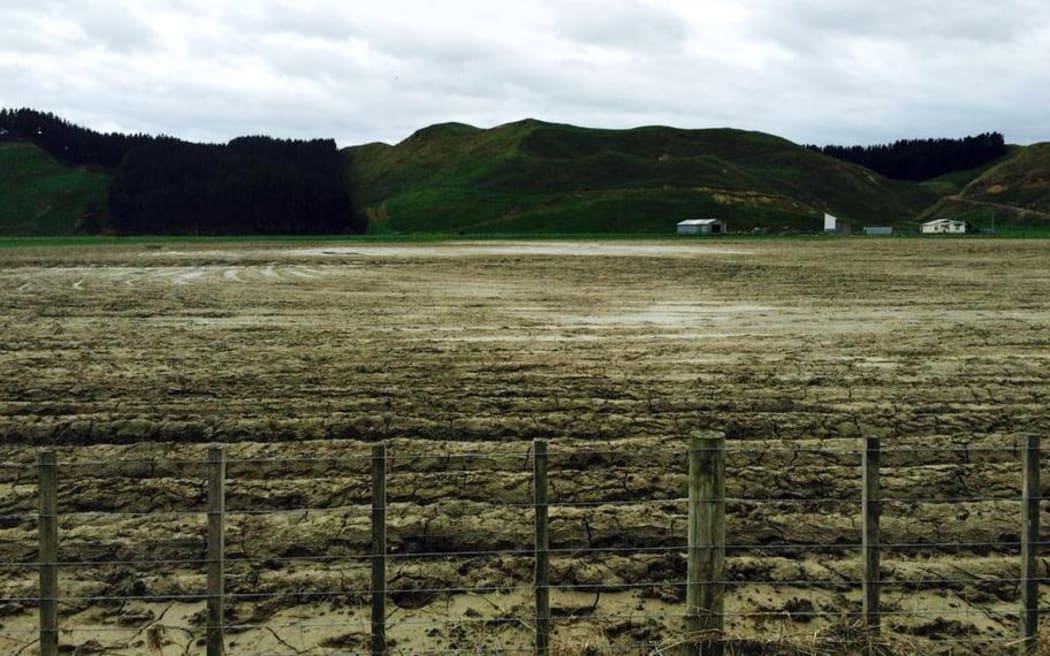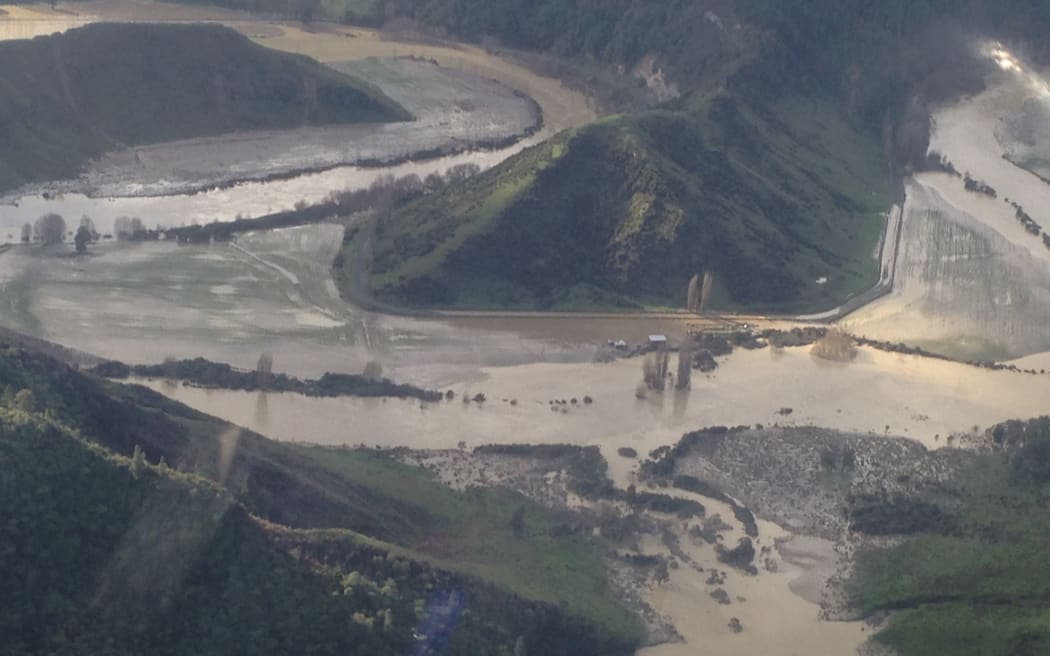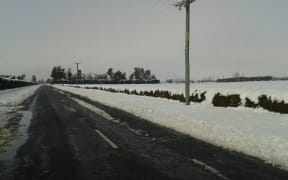A dairy farmer whose property was flooded in southern Taranaki yesterday says she has never seen anything like it.

Gary Massicks' farm is still wet with silt following June's floods; other farmers, in South Taranaki, are cleaning up after fresh flooding yesterday. Photo: SUPPLIED / Gary Massicks
Many farms in and around southern Taranaki were affected, with milking sheds underwater in some cases.
Amy Stevenson and her husband Brent are contract-milking 285 cows at Pihama.
She said they received about 85 millilitres of rain overnight on Wednesday, and the torrential downpour hit about 8am yesterday.
"We had rivers going through the farm that have never been seen for the last three generations."
She said the water threw up a few challenges - including access.
"We have a river that we have to cross at some points, and we weren't being able to cross that. [The water] was right across our tanker track above my knees, flowing like a river.
"We have a very flat farm, but we're also still on a bit of a gradient from the mountain going down towards the coast, so that's why it became like a river... it was flowing down the farm rather than pooling and leaving lakes around."
Ms Stevenson said the rivers have subsided but it was still very wet.
Slow recovery after June's floods
Meanwhile, farmers in Manawatu and Whanganui regions are still suffering the effects of the flooding that hit more than six weeks ago in June.

Flooding in the Waitotara Valley in south Taranaki after June's floods. Photo: Supplied
Farm consultant Gary Massicks said two of his clients, Shaun and Anna O'Leary, had been affected on their dairy farm at Whangaehu, south of Whanganui.
He said they were knee-deep in calving with 1800 cows, while still dealing with the clean-up.
"The total sort of area of flats on the farm, there's about 40 hectares that's been covered in silt and rubbish - and when I say rubbish, I mean trees and branches.
"The silt just hasn't dried out and we desperately need it to dry out so we can do something with it.
"To get some air in the silt, this farmer has decided to drive his tractor all over it and sort of semi-plough it up to try and break it up... Just try to get some air into it and hopefully get some wind across it, and that way it'll improve the drainage."
Mr Massicks said, all up, the flooding has cost between $200,000 and $300,000 worth of damage.
"A week after the flood event, we assessed the amount of damage [and] came up with a bit of a plan, re-worked the feed budget and said right, let's put 100 cows in the works and let's milk less cows this season, and try and save costs that way."



